#Greenland shark
Text

Here's the comic I did for @jeypawlik "Swim On 9" charity shark series please check out this and the other zines at the link below. Fun fact: I reference that Greenland had a previous numeral system than the one used now. The oldest shark found is not quite older that when the modern numbers started to be introduced but there may be older ones and its nice thought. https://topazcomics.com/swimon/downloads/
6K notes
·
View notes
Text

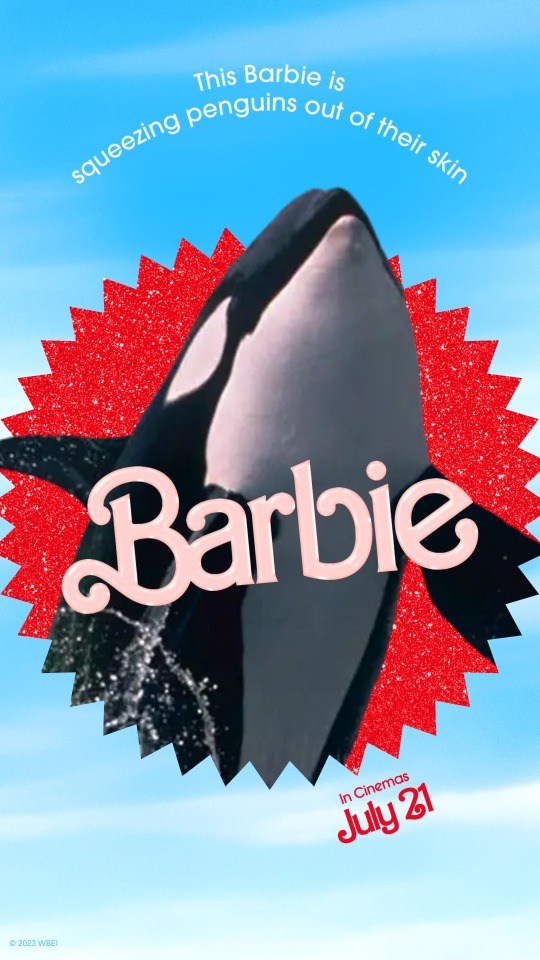


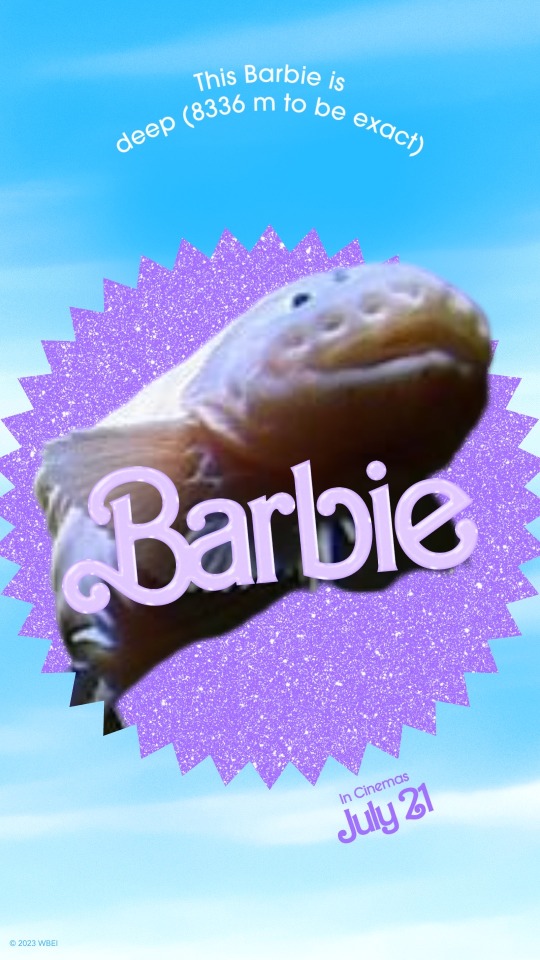
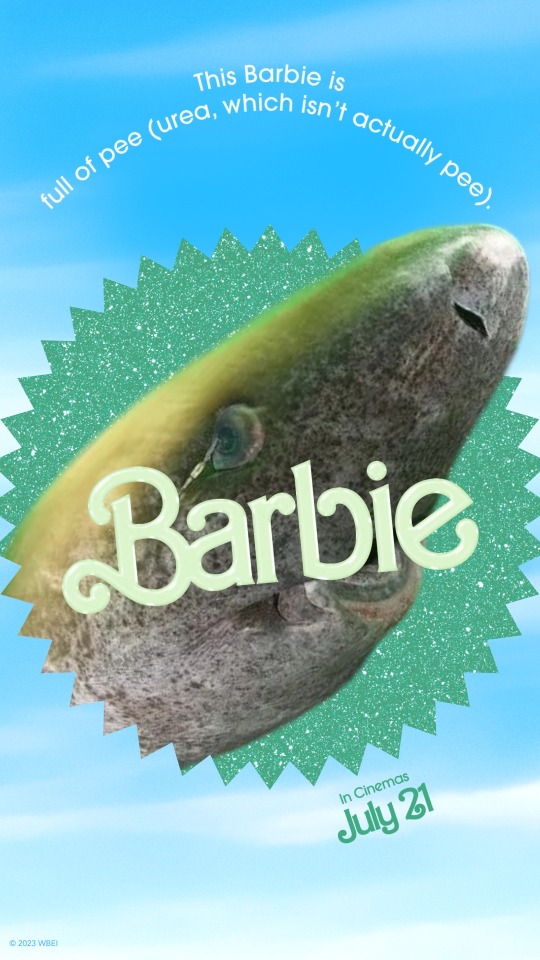


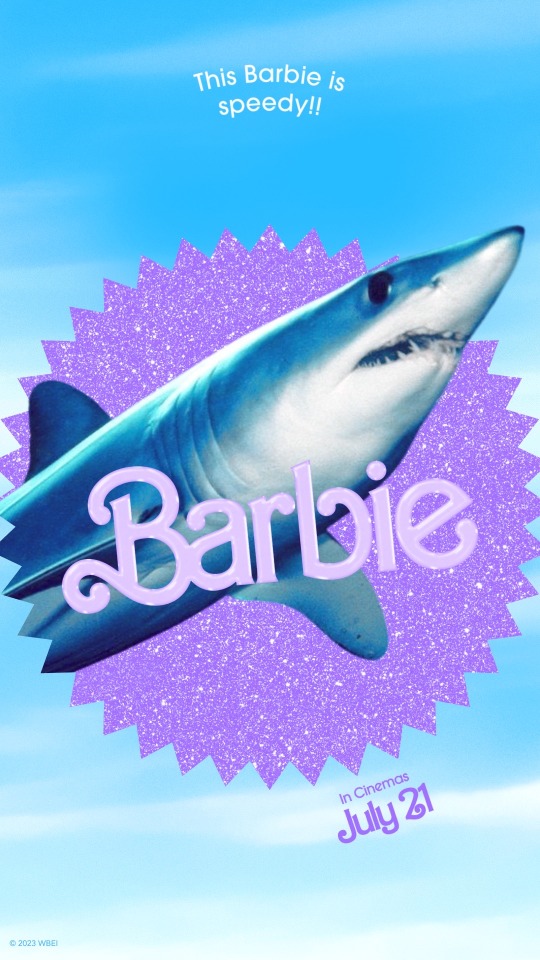
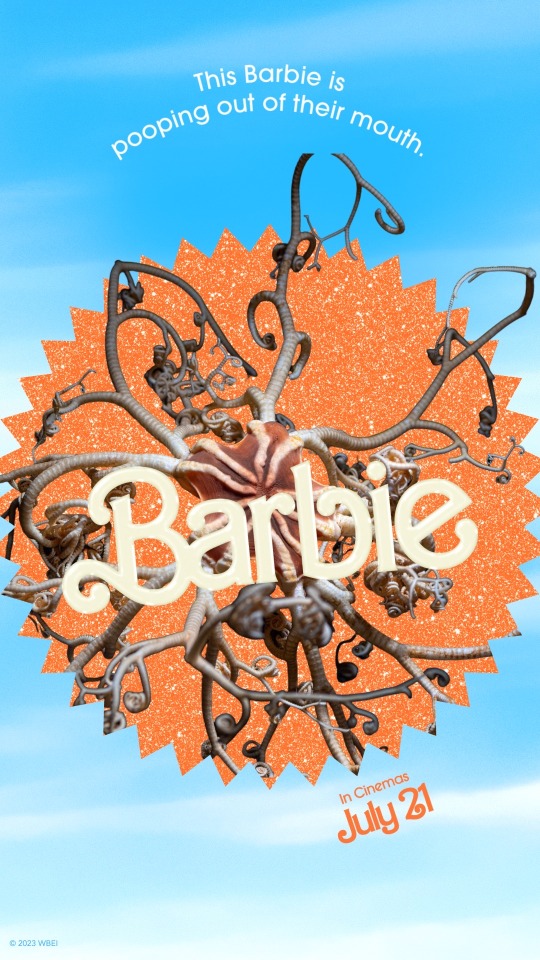
Pictured: pelagic thresher shark, orca, porbeagle shark, blue shark, snailfish, Greenland shark, rockfish, bigfin squid, mako shark, and basket star
#marine biology#marine life#sharks#sharkblr#mako shark#thresher shark#porbeagle shark#greenland shark#fishblr#basket stars#orca#bigfin squid#magnapinna squid#rockfish#snailfish#deep sea creatures#deep sea fish#deep sea#fish memes#barbie#barbie movie#the barbie movie
14K notes
·
View notes
Photo



over on patreon Tama shouted 'shark' at me a bunch of times for the mermaid prompts, which obviously gets results.
goblin shark goblin Mitsu is here again to secure stray forbidden tomes that wander into terrestrial libraries, and this time she's brought the rest of her team.
Sagami is the frilled shark lady who's head of Protection, physical and mental. some cults do NOT want to give up their tomes and some tomes do NOT want to get got. she's basically here to punch assholes in cloaks so Mitsu can work and create wards against unnaturally occurring madness.
Rea, the greenland shark lady, is the team's advanced translator and sacrificial editor. she's still pretty young at only 152 but she should totally be dead by now, a fact which makes the branch of Sedna's Fingers that raised her pretty smug. she translates books with words as well as books where the concept of words (or books) becomes debatable, and whenever a Rough Draft shows up she makes sure it's like, physically tolerable before letting it come in contact with anyone else.
they’re 3 smart ladies just trying to do their jobs in this void eats sanity world.
#goblins#mermaid#goblin shark#frilled shark#greenland shark#monster girls#bare chest#Mitsu#Sagami#Rea#small guide
3K notes
·
View notes
Photo

Greenland shark (Somniosus microcephalus)
#greenland shark#shark#animal longevity#elasmobranch#fish#ocean#marine biology#nature#animals#ichthyology
9K notes
·
View notes
Text
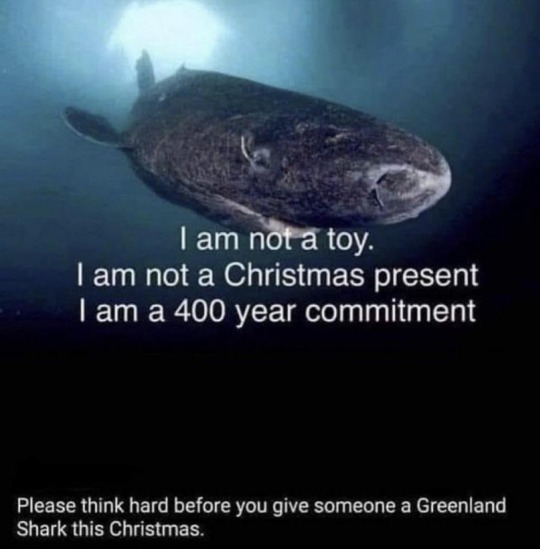
seriously, it’s a big commitment!
2K notes
·
View notes
Text

The oldest vertebrate to ever live was a greenland shark that lived for at least 272 years (in comparison, the previous record holder was a bowhead whale that lived for 211 years).
#fish facts#marine animals#marine biology#shark#shark facts#sharks#fish#sharkblr#fun facts#greenland shark
552 notes
·
View notes
Text
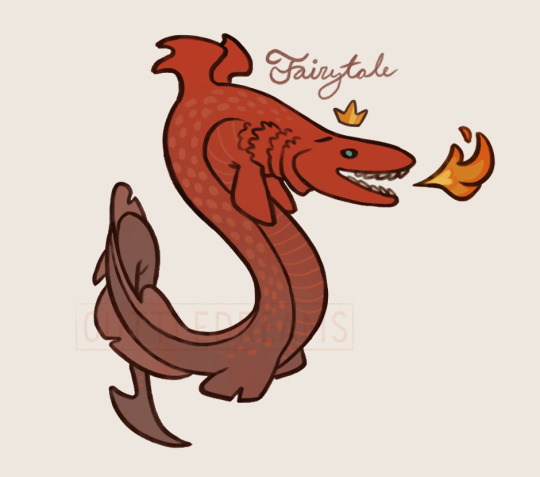
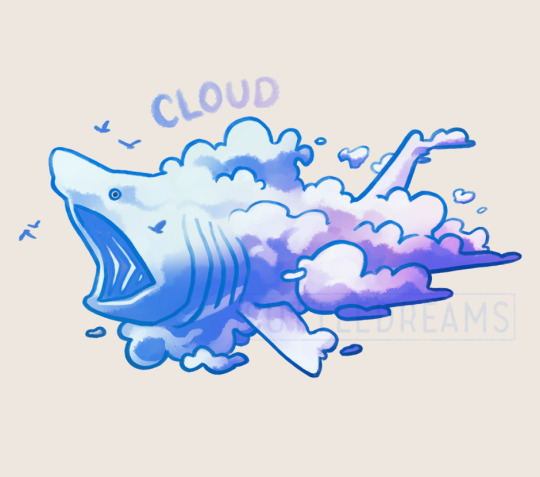
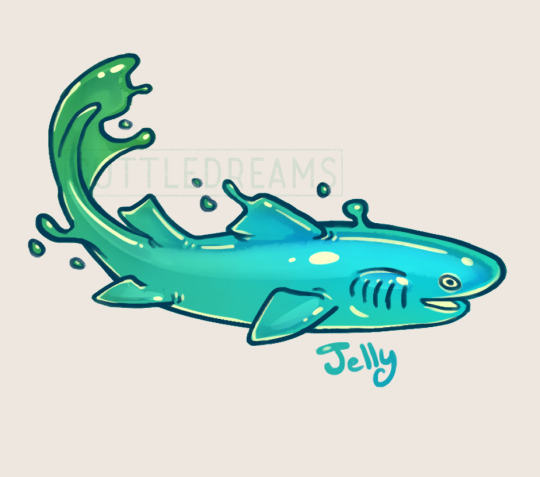
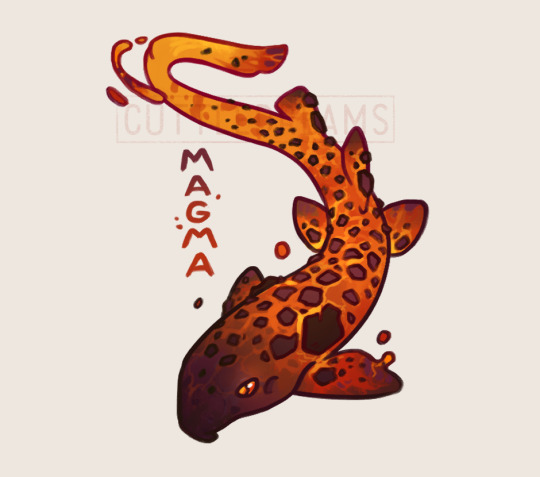
Sharktober!!!!
I won't be doing every prompt since I'm already also doing Invertober but I'm pretty happy with the prompt days I picked out!
Set One:
Day 1: Fairytale Shark (Frilled Shark)
Day 3: Cloud Shark (Basking Shark)
Day 7: Jelly Shark (Greenland Shark)
Day 9: Magma Shark (Epaulette Shark)
Sharktober prompt list is hosted by @requinoesis!
>Prompt List<
#Cuttledreams#sharktober#frilled shark#basking shark#greenland shark#epaulette shark#sharks#sharktober2023
451 notes
·
View notes
Text
Animal of the Day!
Greenland Shark (Somniosus microcephalus)
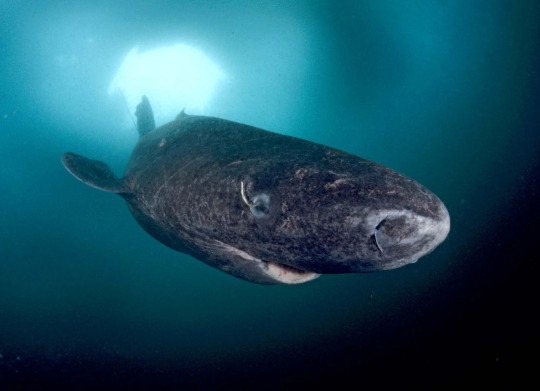
(Photo from Britannica)
Conservation Status- Vulnerable
Habitat- Northern Atlantic; Arctic Ocean
Size (Weight/Length)- 4 m
Diet- Fish; Seals; Small whales
Cool Facts- The world’s oldest Greenland shark may have witnessed the first European boats making their way across the Atlantic to reach the Americas. It is estimated that Greenland sharks can live anywhere from 250 years old all the way to 500. They are extremely slow growing, most likely due to the freezing waters they live in. These sharks are not sexually mature until they turn 150 and a pregnancy can last up to 18 years. They are slow moving, apex predators, targeting sick or sleeping animals which can include moose or caribou swimming between islands. Unfortunately, Greenland sharks are killed for their flesh that is considered a delicacy in Iceland. Overhunting, bycatch, and an extremely slow generation time are the leading reasons for the decline of Greenland shark populations.
Rating- 12/10 (Most of what we know about them is conjecture.)
#animal of the day#animals#sharks#marine life#marine biology#friday#january 5#greenland shark#biology#science#conservation#the more you know
216 notes
·
View notes
Text

Did you know, that like snakes and lizards, most sharks are ectothermic? This means that, normally, they’re not capable of regulating their own body temperature. However, sharks that live in frigid Arctic waters have adapted an ability called counter-current heat exchange. This method of keeping warm, allows these sharks to survive in even the coldest of the world’s oceans.
#cold water sharks#sharks#porbeagle shark#salmon shark#mini great white#bluntnose sixgill shark#pacific sleeper shark#greenland shark#basking shark#spiny dogfish#blue shark#shark blog#respect the locals#cartilaginous fish#advocacy for sharks#shark post#save the sharks#shark awareness#the more you know#i love sharks#just a girl who loves sharks#arctic sharks#cold ocean#arctic ocean#arctic waters#frigid waters
286 notes
·
View notes
Text


SCLEREVIL (Water/Ghost) & RELICANTIQUE (Rock/Ghost)
RELICANTIQUE (Relic/Antique) is RELICANT's evolution, it evolves when it comes in contact with SCLEREVIL (Sclera/Evil Eye)
RELICANTIQUE is based on the Greenland shark, one of the oldest vertebrates in the world, if not the oldest, and one that can live over 500 years old. SCLEREVIL is based on the Ommatokoita elongata, a type of parasite that can be found attached to the eyes of the greenland shark, where it feeds on its corneas.

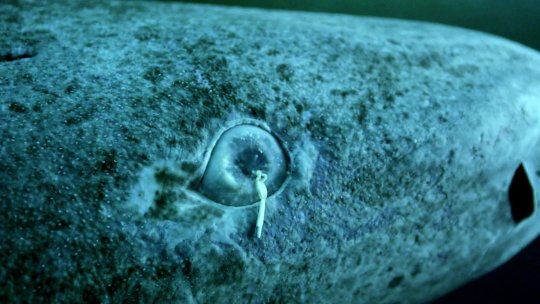
#pokemon#fakemon#fake pokemon#fake evolution#greenland shark#relicanth#parasite#ghost type#ghost pokemon#ghost fakemon#rock type#rock pokemon#rock fakemon#water type#water pokemon#water fakemon
1K notes
·
View notes
Text
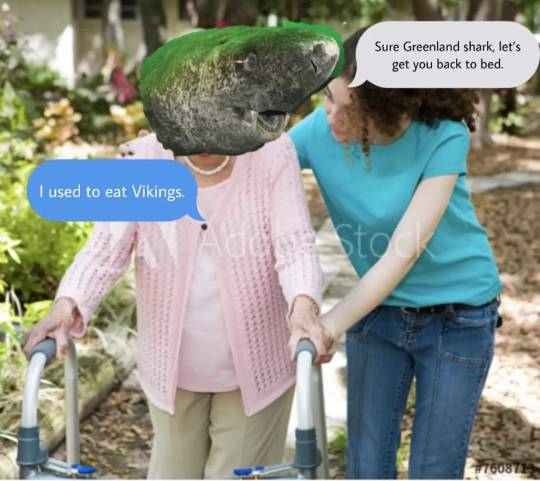
186 notes
·
View notes
Text
Today is Wet Beast Wednesday!
Today’s wet beast is: Greenland Shark


Olive’s wet beast fact: Greenland Sharks can live up to 400 years old (maybe even older) and they swim in Arctic waters. They old and cold.
Stay tuned for more Wet Beast Wednesdays!
#greenland shark#wet beast wednesday#marine biology#aquarium#sharks#fish#oceanposting#fishblr#zoology#marine life#sea creatures
967 notes
·
View notes
Text
#my first poll!#polls#fish#fishblr#shark#sharks#deep sea life#deep sea#deep sea fish#deep sea creatures#deep sea shark#goblin shark#frilled shark#megamouth shark#greenland shark#sleeper shark#cookiecutter shark#bluntnose sixgill shark#ninja lanternshark#lanternshark#kitefin shark#my polls
419 notes
·
View notes
Text

Scientists discover 512 yr. old shark, which would be oldest living vertebrate on earth. Greenland sharks tend to outlive other creatures b/c they're a very slow-growing species and don't reach maturity until 150 yrs. old.
110 notes
·
View notes
Text
We're going to take it slow this Wet Beast Wednesday and talk about Somniosus microcephalus, the Greenland shark. Its one of the sleeper sharks, a family named for their very slow movement and generally low-activity lifestyles. Greenland sharks follow the rule that slow and steady wins the race. With a top speed of 2.6 km/h (1.6 mph), the Greenland shark has the slowest speed of its size of all fish. They also have a slow metabolism which correlates with a very long lifespan. The lifespan of these sharks isn't known for sure, but given that they grow at a rate of about 1 cm per year and can reach around 6 meters in length, they can live a pretty long time. Normal methods of aging sharks don't work on the GS. Sharks are usually aged by counting growth rings on fin rays or vertebrae, but Greenland sharks don't have fin spines and their vertebrae are too sift to form growth rings. In 2016, a paper titled "Eye Lens Radiocarbon Reveals Centuries of Longevity in the Greenland Shark (Somniosus microcephalus)" by Nielsen et al. was published that described a new aging method in which crystals in the eye lens could be radiocarbon dated to provide and age estimate. The oldest shark they tested was aged at 392 ± 120 years old. If the lifespan falls on the upper end of that range, it could give the GS a maximum age of 500 to 600 years old. The same paper also estimated that they don't reach sexual maturity until around 150 years old. The GS is officially listed as the longest-lived of all vertebrates.

It looks like somebody tried to draw a shark from memory (image: a Greenland shark swimming under ice)
The extreme age and slow lifestyle of the sharks is linked to their habitat. Despite the name, they are not only found around Greenland. In fact, they live in very cold waters (0.6 - 12 degrees C or 31 - 54 degrees F) in the north Atlantic and Arctic Oceans. They are the only shark species to live in arctic waters all year round. It is likely that they have a much larger habitat range than we know as they spend most of their time in very deep water. One specimen was found as far south as the Caribbean. It's possible that the north Atlantic and Arctic Oceans are the only places in their range that are cold enough for them to tolerate surface conditions and in the rest of their range they stay in deep, cold water. Being an ectothermic (cold-blooded) animal living in very cold conditions requires a very slow metabolism and slow metabolisms are linked to longer lifespans. A slow metabolism also requires less energy, which is very advantageous for seep-sea animals, who may be forced to go for months or longer between meals. The size of the shark may also be linked to its habitat. At up to 7 meters (23 feet) long and 1,400 kg (3090 lbs), the GS is one of the largest fish in the world. This size could be an example of deep-sea gigantism, a phenomenon in which deep-sea animals grow much larger than their shallow-water relatives. There are many proposed explanations for deep sea gigantism, including cold temperatures inducing growth (Bergmann's rule), improved foraging ability, defense against predators, and greater dissolved oxygen availability in colder and deeper waters. Because of their abyssal habitats, Greenland sharks are rarely observed in the wild and we know little about their natural behavior.
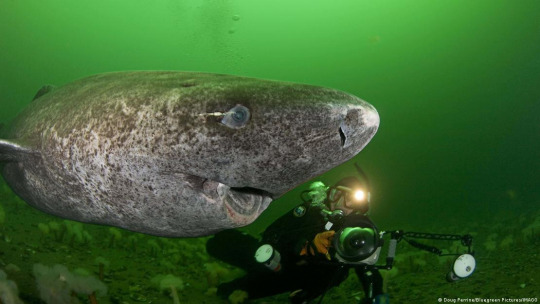
(Image: a scuba diver swimming next to a Greenland shark)
What does a large carnivore living in food-scarce deep water eat? Just about everything. Greenland sharks are generalists who will eat almost any meat. They are both scavengers and active predators, with a diet consisting primarily of squid as juveniles and fish as adults. Most of what we know about their diet comes from the stomach contents of dead specimens as they have very rarely been observed feeding in the wild. Seals also make up a large portion of their diet. As it's very unlikely that such a slow shark could chase down and catch a seal for lunch, the shark likely targets sleeping seals. Greenland sharks are scavengers who likely get a lot of nutrition from carrion. They have very sensitive noses that they use to track down rotting meat. Stomach contents have revealed meat from various animals, including polar bears, moose, and reindeer. They are known to follow fishing boats to snatch up any scraps. Greenland sharks are apex predators who play an important role in the Arctic ecosystem.

(Image: a Greenland shark captured by a fishing boat)
As mentioned above, Greenland sharks are estimated to reach sexual maturity at around 150 years old. They are ovoviviparous, meaning that the eggs hatch while still in the mother, who then gives live birth. A typical litter has around 10 pups (likely the maximum given the metabolic requirements of reproduction) that are about 38-42 cm (15-16.5 in) long. Due to their lifespan, it is estimated that a single female could produce between 200 and 700 pups during her life. Unconfirmed reports have been made of them hybridizing with other sleeper sharks.

(Image: a 100-year old juvenile shark that washed up on a beach in England)
Greenland sharks are often found infested by the parasitic copepod Ommatokoita elongata. This parasite attaches itself to the cornea of the eye and infests both the Greenland shark and the Pacific sleeper shark and dangles out of the eye like a thread. The presence of the copepod damages the eye, leaving the shark almost if not entirely blind. This doesn't actually seem to hurt the shark that much as they rely mostly on smell and hearing. One hypothesis stated that the copepod may bioluminesce to attract prey to the shark, but this remains unconfirmed.
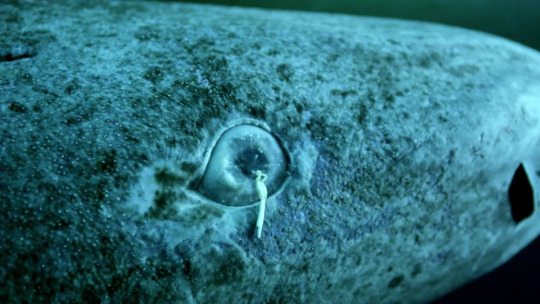
(Image: a close-up of a Greenland shark eye infested with a copepod)
Now to address the elephant seal in the room: Greenland sharks stink. All elasmobranchs have concentrations of the compounds urea and trimethylamine N-oxide (TMAO) in their bodies, but the GS has a higher concentration of these compounds than other species. The compounds are waste products retained by elasmobranchs to aid in buoyancy and the GS has more because they also help resist the pressure of the deep ocean. The concentration of urea is high enough that you can smell it if the shark is near you. Urea is a key component of urine. Greenland sharks smell like piss. The high levels of TMAO makes Greenland shark meat toxic to humans. Despite this, people still eat the meat, but it must be treated first. This can be done by boiling the meat multiple times or by fermenting it. A national dish of Iceland, kæstur hákarl, consists of Greenland shark meat that has been buried underground in gravelly sand and pressed with stones, then left to ferment for 6-12 weeks. It is then dug up and cut into strips, which are hung up and left to dry for several months. Apparently first time eaters are known to gag because of how much ammonia is in the meat. I don't think I'll try any.

(Image: hákarl hung up to dry)
Because of their deep-sea habitat, Greenland sharks have relatively few interactions with humans. In the past, They were hunted for their liver oil, but in modern days, there is no fishery for them. Greenland sharks are classified as vulnerable by the IUCN. Their primary threat is bycatch and they are likely being affected by ocean warming and loss of sea ice in the Arctic. Because of their slow maturity and low fecundity, Greenland sharks are particularly vulnerable to population loss. There are no recorded attacks on humans. The species features in the legends of the Inuit. The legendary first Greenland shark was named Skalugsuak and one story says it was born after a woman washed her hair with urine (a lice remedy) and dried it with a cloth. The cloth then blew into the ocean and turned into Skalugsuak, who still smells like urine. Another legend says that the shark lives in the urine pot of Sedna, the sea goddess, explaining its smell.

(image: scientists tagging and releasing a small Greenland shark)
#wet beast wednesday#fish#fishblr#shark#greenland shark#marine biology#marine life#ecology#zoology#ichthyology#long post#animal facts#old man that smells like pee
322 notes
·
View notes
